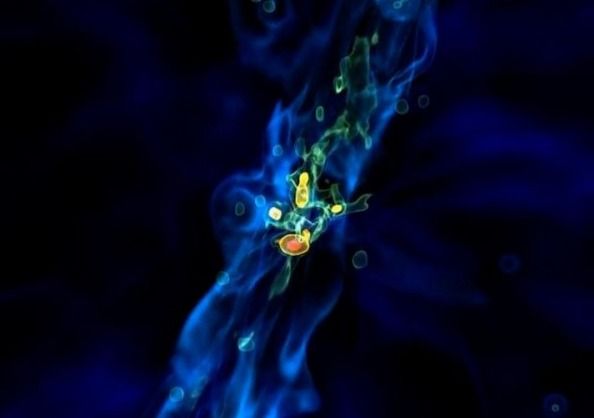A new computer simulation helps explain the existence of puzzling supermassive black holes observed in the early universe. The simulation is based on a computer code used to understand the coupling of radiation and certain materials. “Supermassive black holes have a speed limit that governs how fast and how large they can grow,” said Joseph Smidt of the Theoretical Design Division at Los Alamos National Laboratory, “The relatively recent discovery of supermassive black holes in the early development of the universe raised a fundamental question, how did they get so big so fast?”
Using computer codes developed at Los Alamos for modeling the interaction of matter and radiation related to the Lab’s stockpile stewardship mission, Smidt and colleagues created a simulation of collapsing stars that resulted in supermassive black holes forming in less time than expected, cosmologically speaking, in the first billion years of the universe. “It turns out that while supermassive black holes have a growth speed limit, certain types of massive stars do not,” said Smidt. “We asked, what if we could find a place where stars could grow much faster, perhaps to the size of many thousands of suns; could they form supermassive black holes in less time?” A video about the discovery: https://www.youtube.com/watch?v=LD4xECbHx_I&feature=youtu.be
